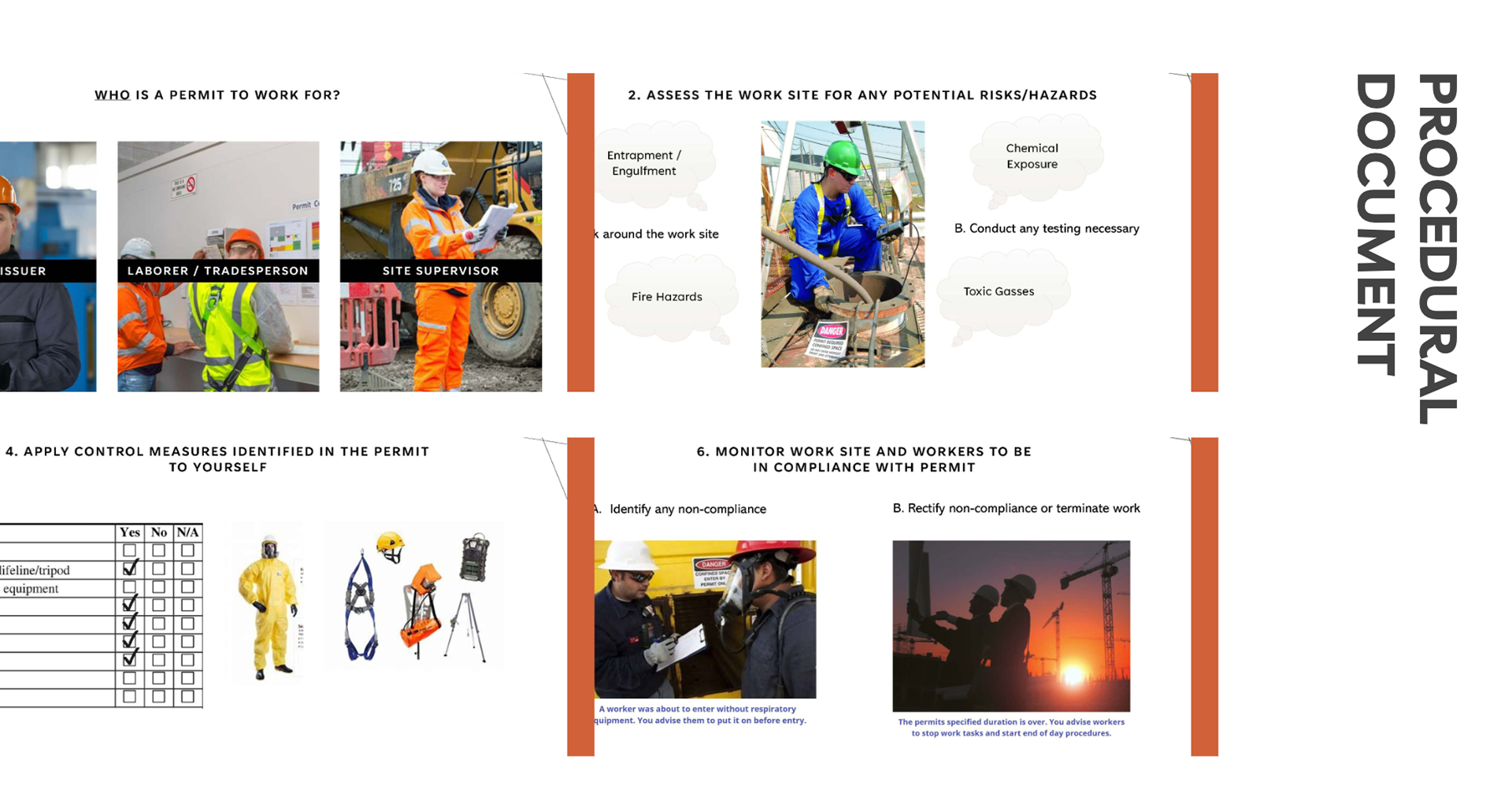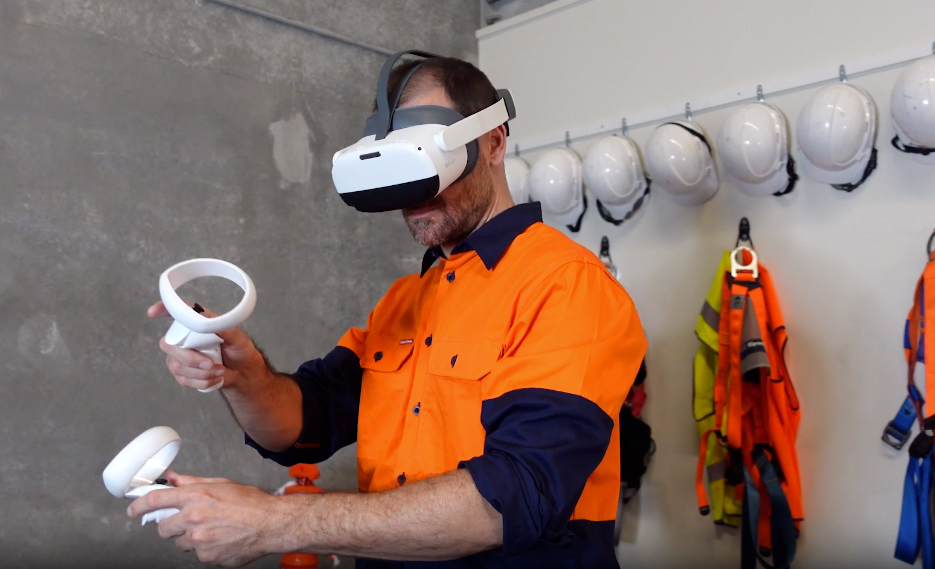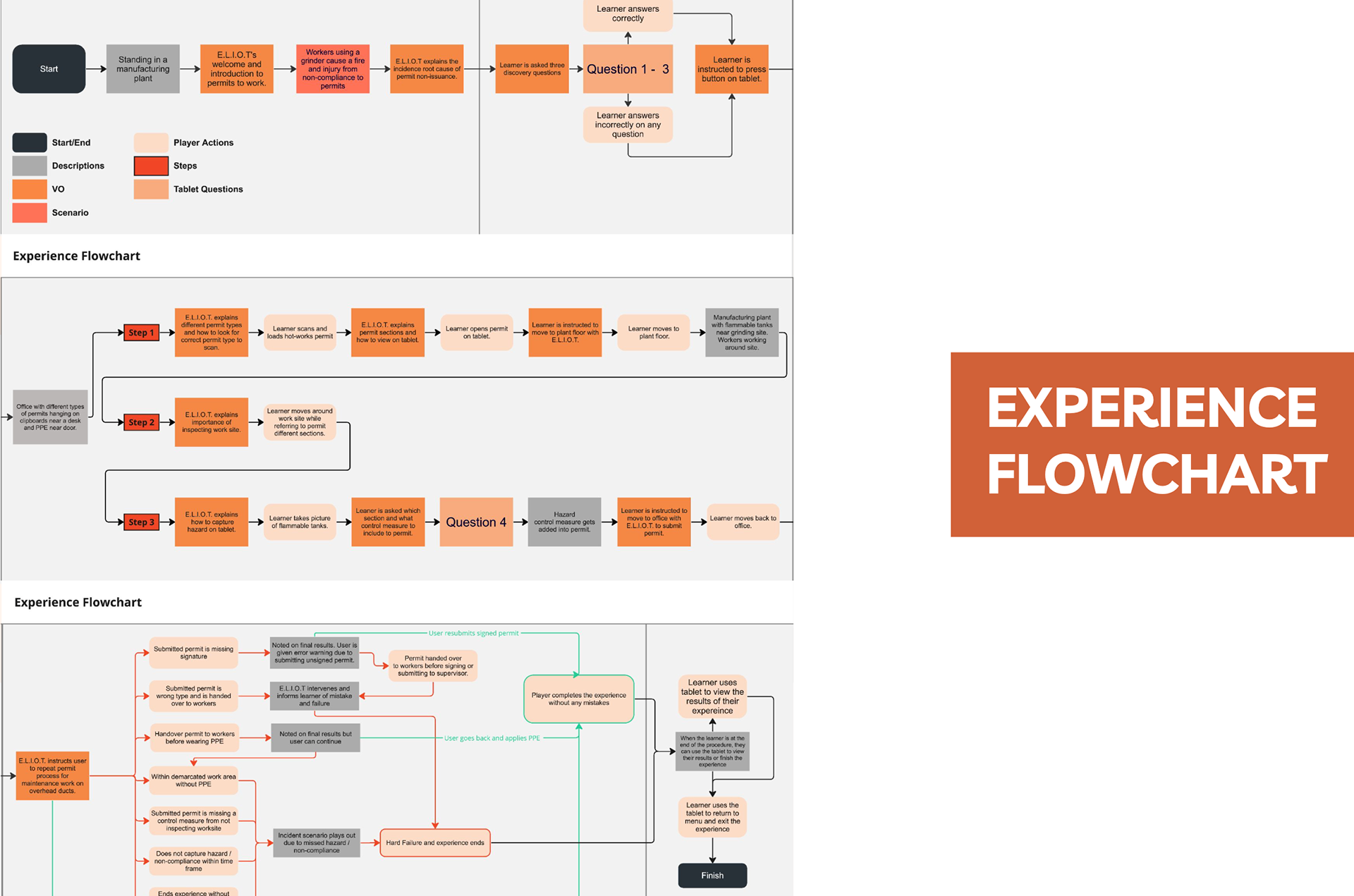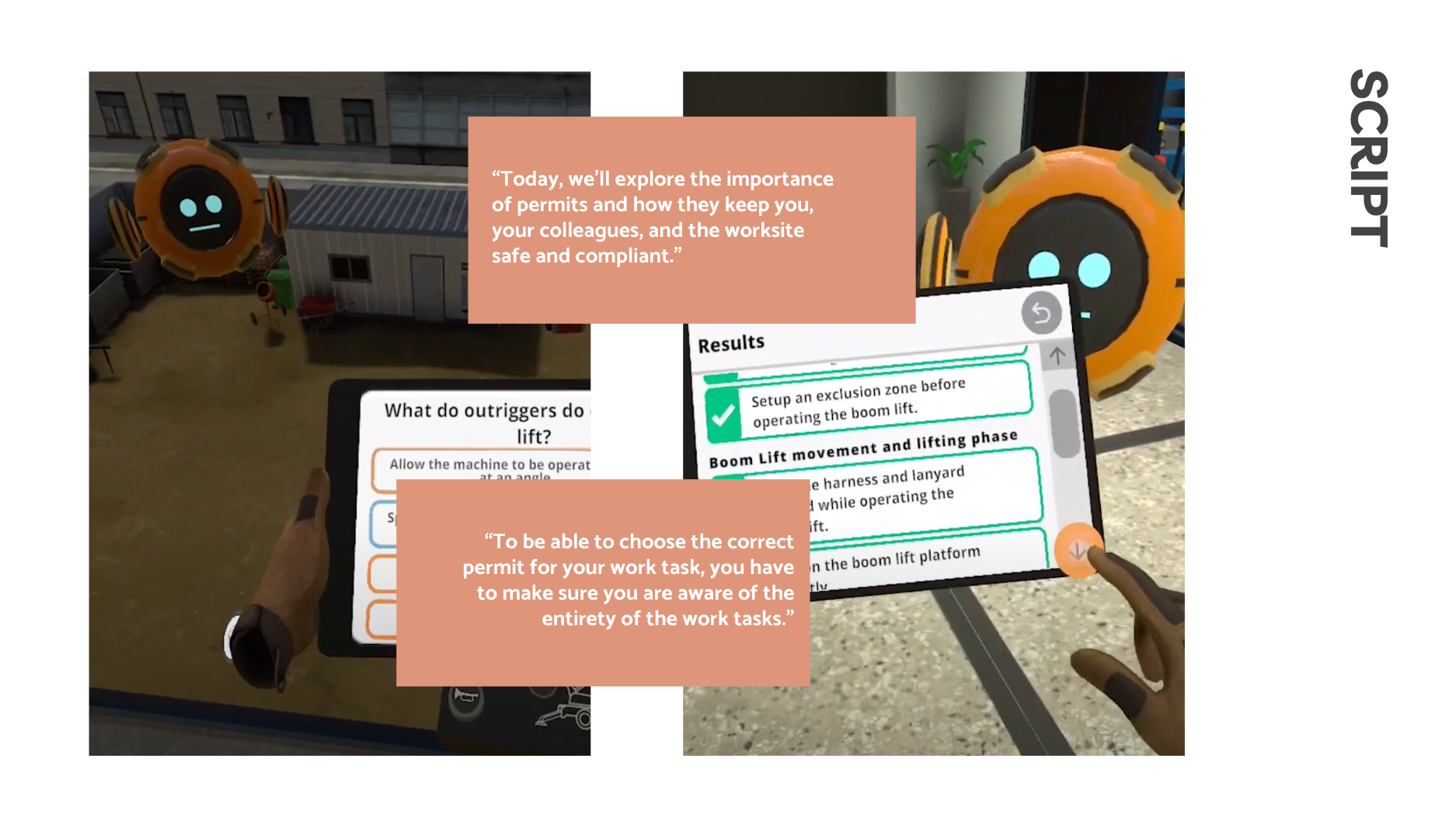Background
As an immersive UX designer at Next World, my capstone experience involved working on enhancing workplace safety training through virtual reality (VR) simulations. Next World's goal was to revolutionize traditional training methods by transforming static materials into engaging and interactive training experiences that would improve knowledge retention and skill application in the workplace.
During my internship, I had the privilege of serving as a Virtual Reality Immersive Designer, working closely with my mentor, Lewis, the Creative Director. This allowed me to gain valuable guidance and direction throughout the project. I also collaborated with an experienced designer and colleagues within the development team, fostering a creative and collaborative work environment.
Project Goal
My main responsibility was to design a new off-the-shelf training program for permits to work. Permits to work are essential documents in workplace safety, especially in high-risk areas such as working at heights or confined spaces. I took on the challenge of creating an immersive training experience that effectively conveyed the importance and procedures involved in obtaining permits to work and applying them to the worksite.
Discovery
To begin the design process, I first focused on the discovery phase. This involved gaining a thorough understanding of Next World's current training standards and practices, examining past design processes, and participating in VR training sessions. Additionally, I conducted extensive research on permit training practices and the government-mandated Competency Units. I even had the opportunity to experience confined space training firsthand, which provided practical insights into the training process.
Definition
Next, I moved into the definition phase, where I aimed to improve my research skills and analyze the design requirements for effective immersive training products. I set specific goals aligned with the design timeline and started conceptualizing the training program. This included analyzing different permits commonly used in workplaces to identify similarities and differences, mapping out the permits-to-work process involving various stakeholders, and creating examples to effectively explain the process to stakeholders.




Development
Once the concept was defined, I moved on to the development phase. Here, I focused on prototyping and testing the training program. I explored various approaches to engage learners and promote safety habits, leveraging VR to simulate real-life tasks and replicate authentic scenarios. I used scenario-based learning to strike a balance between providing technical information and showcasing the consequences of users' actions. Multiple iterations and discussions with my mentor and the other designer helped refine the design decisions.
Delivery
In the delivery phase, I worked on implementing the final design and evaluating its impact. I created a flowchart that defined the key steps in the training program and mapped potential branches and their repercussions. I developed a script for the virtual trainer, E.L.I.O.T, ensuring clear and concise instructions that effectively communicated the learning objectives. Additionally, I created a scenario document that provided clear descriptions of each scenario and outlined potential outcomes based on user interactions.




Throughout the entire process, my goal was to create a cohesive and impactful training experience that empowered users to learn and apply essential concepts while maintaining a focus on safety and practical skill development. I focused on creating documentation artifacts, including the flowchart, script, and scenario document, to ensure a well-rounded training program.
Reflecting on my internship experience, I gained valuable insights into the application of immersive practices in workplace training. VR training creates a realistic and engaging learning environment that improves knowledge retention and skill development. It offers cost and time efficiency, as it eliminates the need for physical setups and allows for flexible remote access. Real-time performance assessment and immediate feedback within the simulations facilitate targeted guidance and continuous learning.
By embracing immersive practices in workplace training, organizations can enhance employee engagement, promote a safety mindset, and improve overall performance. I witnessed firsthand how immersive practices, such as VR training, have the potential to revolutionize training approaches and contribute to a safer and more effective learning environment in the workplace. I am excited to continue my journey as an Immersive Experience Designer, exploring further aspects of immersive design and its impact on training.